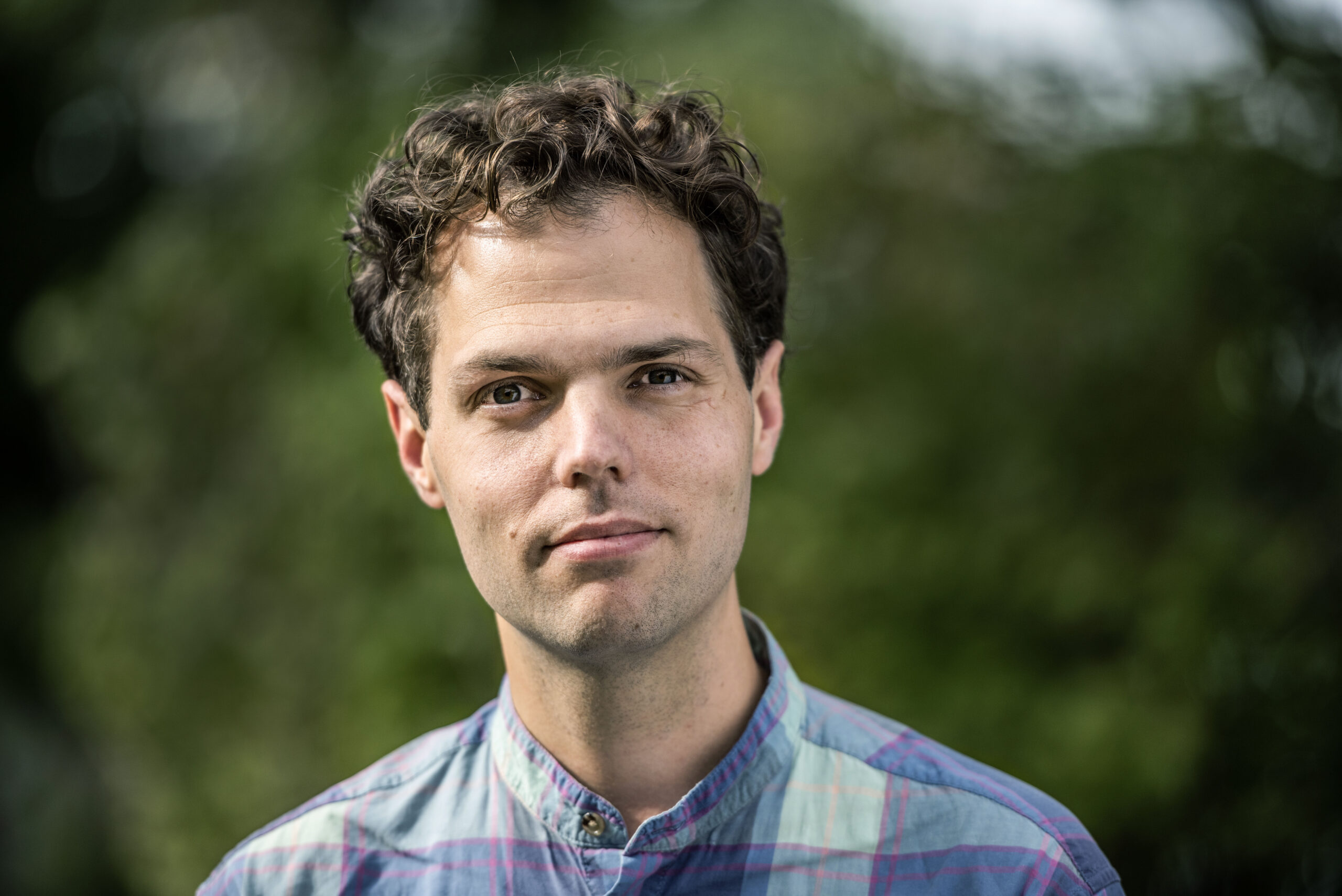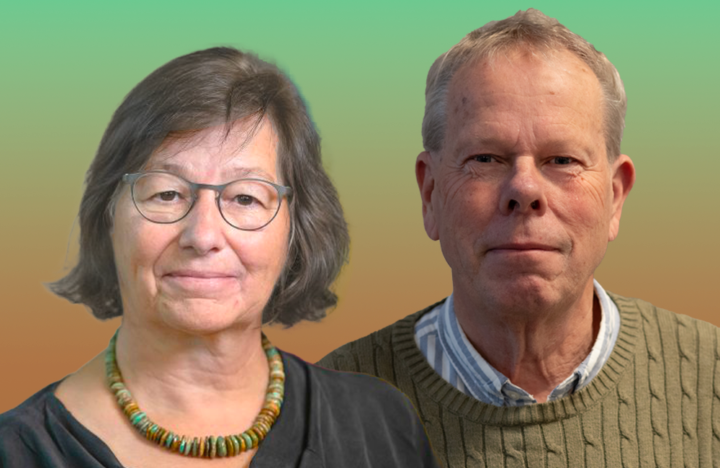18 October 2025
David Marlevi is the chair of the panel working on the election of new members in 2026. From 24 October, researchers from all subject areas can submit applications. The election panel looks at scientific merits and engagement in academic issues. The election is open to younger researchers who obtained their doctorate 2–10 years ago, and the members selected can look forward to five years with the academy.

David Marlevi is an assistant professor in medical science and docent in medical imaging at Karolinska Institutet and a member of the Young Academy of Sweden for 2024–2029. Photo: Lars Pehrson/Young Academy of Sweden
Being a part of the Young Academy of Sweden cannot be compared to any other context one is involved in as an independent young researcher. Here, you are encouraged to think about the big picture, the very conditions for a free and creative research culture. For example, if you are passionate about discussing research with young people, or perhaps genuinely working on the political conditions, or broadening your interdisciplinary network with researchers from other countries – regardless of your focus, you can create something truly fantastic here! The Young Academy of Sweden opens doors.
Together we work on larger projects and are able to reach many more people. Since many engaged members from different fields work together, and with the fantastic support of the secretariat, we can manage large projects. Such as writing a children’s book or organising an international conference. One thing that characterises the work within Young Academy is that no matter how much energy you invest, you always get more back! It’s somewhat of a mystery. Although we often work intensively, in some way, you always come back from academy meetings and activities with a plus on the energy account.
You apply yourself to become a member. During the autumn, the academy has an open call where interested individuals can submit an application. All applications are then reviewed by the election panel, and we assess two things: the applicant’s scientific excellence and their engagement on issues that are close to Young Academy of Sweden. In recent years, we have had about 70–110 applicants, and from these, the best 6–8 candidates are selected. The competition is tough, and it is not uncommon for members to have applied several times before being accepted. If you were not selected, we encourage you to apply again!
The Young Academy of Sweden appoints a selection panel each year consisting of members from various subject areas. The selection panel manages the entire selection process, including reviewing applications and conducting interviews with the applicants in the final stage. The composition of the panel varies slightly over the years, and the selection process restarts every year. All applicants are treated exactly the same, whether they have applied before or not. The selection panel makes its proposal to the academy, which then jointly decides whether the proposal should be accepted or not.
The selection panel assesses two criteria: excellence and engagement, and both must be present for a person to be selected. It is therefore not enough to be at the top level in Sweden in your field if you do not meet the engagement criterion, or vice versa. The reason engagement is included in the assessment is that the we are a working academy. We are looking for members who want to and can contribute to the academy’s work.
Broadly speaking, we assess this in a similar way to research funders. This means we look for candidates who have demonstrated examples of innovative and outstanding research. Other merits we look for include granted research funding and qualification positions. Since we select relatively young researchers, we are also careful that candidates must have demonstrated independence from their previous supervisors in their research. In the natural sciences, engineering, and medicine, independence is often evident if they have published as senior authors without their previous supervisors. In the social sciences and humanities, excellence may be demonstrated through influential monographs or book chapters, innovative theoretical contributions, or pioneering methodological approaches. We take full account of the fact that research and qualifications vary across different research fields.
The Royal Swedish Academy of Sciences’ Young Academy is a working academy, and all members are expected to actively work on projects that fall within the academy’s activities. We believe that previous interest and engagement is a good predictor of future efforts, and therefore, we are looking for individuals who have demonstrated engagement in the areas that the academy is working on. We also consider new idea proposals. The applicant does not need to be an expert in any way, but it is important that there is a genuine interest. The academy’s secretariat assists in conducting activities.
An important part of the selection process is the interviews. Based on the applications received, the selection panel selects up to sixteen people who are invited to interviews conducted in groups of about four participants. The selection panel asks a number of questions that the candidates discuss among themselves. After the questions, there is an opportunity to ask questions to the members of the selection panel.
The academy currently has a gender-balanced composition with a good distribution of subjects and higher education institutions. We are proud of that! In the selection process, we actively work to treat all applications equally, but we have no requirements that the selected members must be from certain subjects or institutions, etc., to maintain a good balance in the academy. Of course, we keep an eye on the balance throughout the selection process, but so far, we have always achieved a well-balanced composition of the selected members without any special measures.
We follow the Swedish Research Council’s guidelines for conflicts of interest. This means that anyone with a conflict of interest leaves the room when we discuss the candidate for whom they have a conflict. Since the interviews are conducted in a group, conflicted members sit in the selection panel to hear the other candidates but do not participate in any discussions about the candidates for whom they have a conflict later on. Additionally, we have an observer (the academy’s CEO) present at all meetings with the selection panel. The observer’s role is to ensure that we follow the conflict rules and treat all candidates equally.
No, we do not have the capacity to give individual feedback to the applicants.
The selection process is in many respects very different! When you, as a researcher, are used to formulating project plans or scientific questions, it was both challenging and exciting for a change to reflect on the role of research – and not least my own – in society. How do I think my own research can impact society? How do I think I, as an individual researcher, can influence society? And not least: what kind of research community do I want to see in the future? The fact that the interview is conducted in a group format where you are allowed to discuss research questions with other applicants is also both different and exciting. The group format was also very inspiring and sent a clear signal: in academia, we discuss things in groups and work together. After the interview, I was even more excited about the possibilities within the Young Academy of Sweden — so there might have been a little happy dance or two when the good news came!
I’m genuinely passionate about multidisciplinary work — about collaborating with people who have different yet complementary expertise. If we want to tackle society’s major challenges, we have to do it together, in ways that allow each of us to contribute from our own perspective. As a researcher in clinical science with a non-clinical engineering background, multidisciplinary work has been both a key and a challenge.
My engagement before joining the Young Academy of Sweden was also closely linked to this: serving as a student representative for a joint doctoral programme between KTH and Karolinska Institutet, leading local initiatives to integrate AI technologies into medical research, and giving popular-science talks where I’ve had the chance to explain technical research to an interested public. Looking beyond my own research field — whether through dialogue with colleagues from other disciplines, or even more so through conversation with the public — is something I find deeply important.
During my time in the Young Academy of Sweden, it’s been truly inspiring to interact with members from entirely different research areas, yet all sharing the same conviction in the power of science. I’ve also learned an incredible amount and gained a stronger understanding of how research can connect more closely with both policymakers and the wider public.

Latest news from the Young Academy of Sweden, published approximately six times a year. You can unsubscribe at any time.